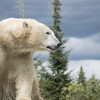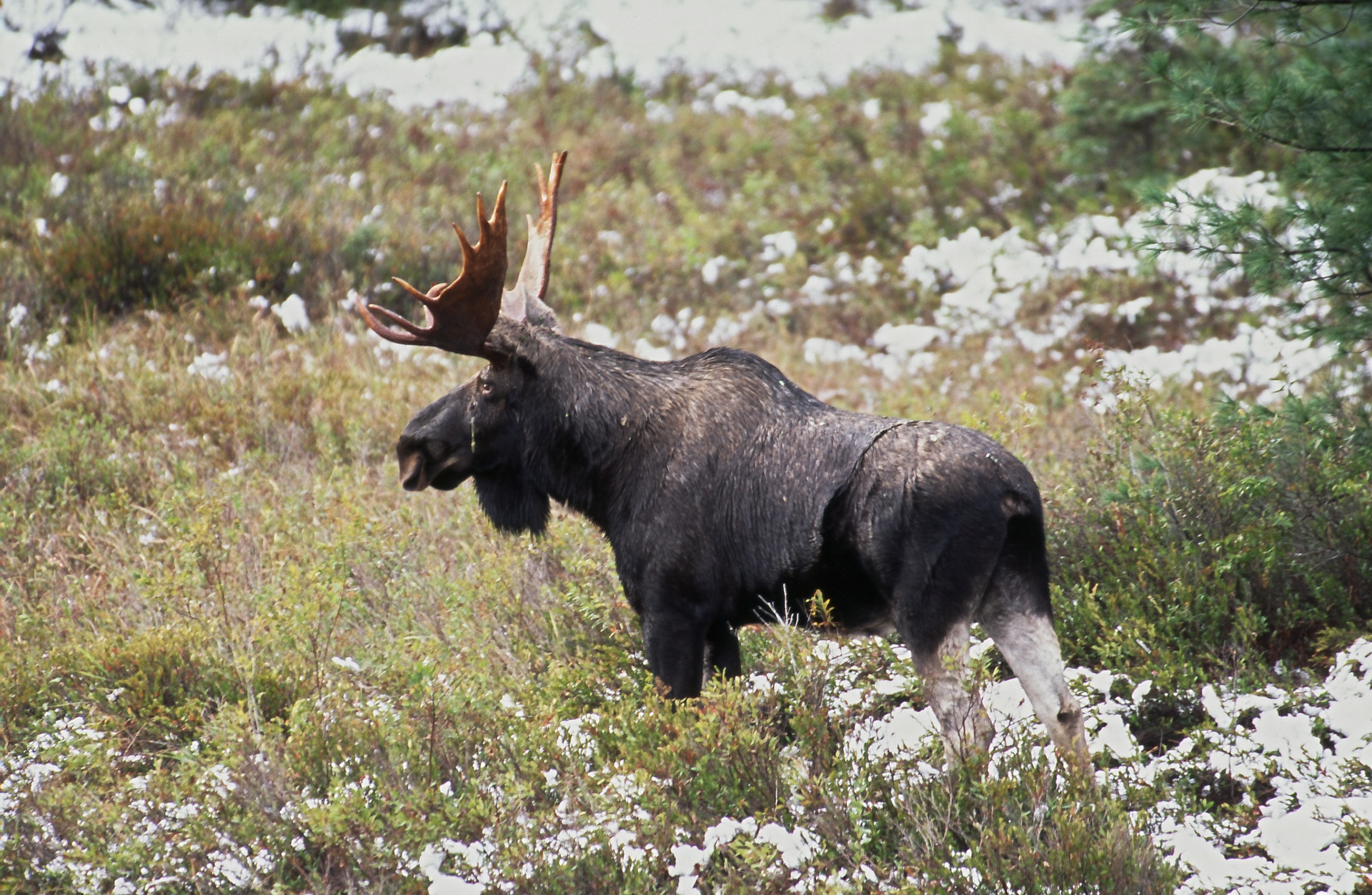Trophy Whitetails Live Here

When the leaves start to fall and the nights grow cooler, white-tailed deer hunters of the Northeast prepare for the most anticipated time of year - the annual pilgrimage into deer country. BIG deer country!
Northeastern Ontario boasts some of the largest whitetail bucks anywhere. Though it rarely receives accolades as a top trophy destination, it very well should, though folks in that region would rather keep that fact under their hats. Truth of the matter is that the Northeast produces magnificent 200 and even 250 pound (field-dressed) whitetail bucks each fall, with impressive headgear to match.
With lower deer densities due to harsher conditions in the North woods, there may not be a whitetail hiding around ever tree, but the ones they do have are big and burly! It is not a fluke either that deer of the Northeast are bigger and more resilient than most. Among other things, a combination of ecological factors such as natural selection and Bergmann’s rule has conditioned them that way.

Natural Selection
The mechanism of natural selection influences the way species evolve over time and adapt to conditions, causing them better survive in their habitats. White-tailed deer’s body physiology has changed over generations, better equiping these animals for conditions they face. Their ears became more rounded for improved hearing to protect from predators. Their eyes have also moved further apart offering a wider field-of-view against danger.
Deer found in colder climates such as Ontario’s Northeast tend to have larger bodies than the southern dwellers. A more hefty body size improves the animal’s chance of doing well in the winter. Those that fare the best go on to mate and breed with others who are doing the same. Over time, whitetails of the Northeast have adapted to deal with the rugged terrain and harsher winter conditions, making them bigger and stronger - and yes, harder to hunt.
Body Mass & Bergmann’s Rule
German Biologist Carl Bergmann noticed a pattern in nature where latitude tends to dictate body mass. The Bergmann Rule was especially true among white-tailed deer where animals found in the south tended to exhibit smaller body sizes than their northern cousins. Larger bodied deer found in Ontario’s Northeast generally have more mass and body fat, and are better equipped to survive harsher climates than small bodied animals. Access to food sources and a lack of natural predators in the north also help them do well.
For example, the average whitetail buck found in North Bay or Temiskaming Shores would be considerably bulkier than one found in the southwest like London or Chatham. Although antler size does not always follow body size, a mature whitetail buck from Northeastern Ontario typically sports an 8 - 10 point rack of approximately 18 - 20” wide. Trophy sized bucks sometimes grow larger than that.
Hunting Big Northeastern Ontario Whitetail

Since deer numbers and densities are lower in the north, hunters must learn to adapt. Traditional hunting parties still perform deer drives or chases in many areas which can prove difficult in moving and locating larger bucks. Still hunting and tree stand hunting are another option for those who prefer to hunt on their own. Anyone who has pursued a wily old Northern buck knows firsthand how difficult it can be. As someone who’s hunted the North Country for more than 35 years, a mature northern whitetail buck is a quarry like no other.
Sure, you may see a handful of yearlings and even 2 ½ year old bucks during the hunt, but that old warrior whitetail that’s managed to elude hunters for 4 (or more) deer seasons has learned how to stay out of sight. Hunters need to do their homework and plan their hunt out accordingly. Use plenty of trail cameras to establish travel patterns of these big bucks. Be persistent and it will eventually pay off.
Land of Trophy Whitetail
Although not revered as the trophy buck opportunities in Northwestern Ontario, the province’s northeast boasts an underutilized advantage. In Wildlife Management Units 47-57 covering much of the Northeast, the likelihood of running into a massive bodied and antlered buck is always a possibility.
Though the term ‘trophy’ can be subjective, the larger heavier antlers are general those which fall into the ‘trophy’ category and are measured under one of the accepted record book systems; Pope & Young (for bow hunting), Buckmaster’s Trophy Records (BTR) or the highly coveted Boone & Crocket Club. Ontario’s Friends for the Recognition of Ontario Wildlife (FROW) also maintain a record book of the province’s largest whitetail trophy bucks, and many of these are from the northeast.
See a full list of our operators for your shot at a trophy whitetail!
Good luck on your hunt this fall! If you’re fortunate to harvest a magnificent big bodied whitetail, try out this recipe from my Canadian Wild Game Cookbook, published by Company’s Coming.
Venison Breakfast sausage

This venison recipe is somewhat of an anomaly. Most of the venison sausage recipes you typically find are for dinner sausages, usually involving a smoker to make pepperoni- or pepperette-style sausages. But with this one, you can make a batch of venison breakfast sausages that are as moist and every bit as tasty as pork or beef breakfast sausages. And by preparing a large batch, you can divide it into smaller portions and freeze them to use later as needed. Makes 48 patties.
- 6 lb ground venison
- 2 lb ground pork
- ¼ cup curing salt
- 1 tbsp pepper
- 1 tbsp crushed dried chillies
- ¼ cup brown sugar
- 3 tbsp dried sage
- 2 tbsp butter
Place the venison and pork in a large bowl and mix together. Add the remaining ingredients and mix well. Fry, then eat one small piece to ensure the seasoning is to your taste before proceeding to the next step. Divide mixture into eight one-pound portions and freeze. When ready to use, thaw one portion and form into six patties. Melt butter in skillet over medium heat and cook sausage patties, turning occasionally, until browned and cooked through.
---------------------------------------------------------------
The white-tailed deer rifle hunting season in much of the Northeast begins November 7th. For anyone planning to hunt in Ontario this fall, please consult the Ontario Hunting Regulations.
Recommended Articles
The Seven's Best Hikes, Biking Trails and Lakes

7 Best Spots to Check Out in The Seven

Budget Bliss: Explore Northeastern Ontario Without Breaking the Bank

Bring Your Fam!

Time to Unwind: 6 Spa Havens to Discover In The Seven
5 Amazing Places to SUP in Northeastern Ontario

5 Amazing Bike Rides to Discover

Northern Lights in Northeastern Ontario

Northeastern Ontario's Best Pride Festivals

Fish for one of the World's Rarest Species of Trout

An Insider's Guide to Manitoulin Island

6 Small-Town Gems to Explore in Northeastern Ontario

11 Best Things to Do in Kapuskasing, Ontario






























